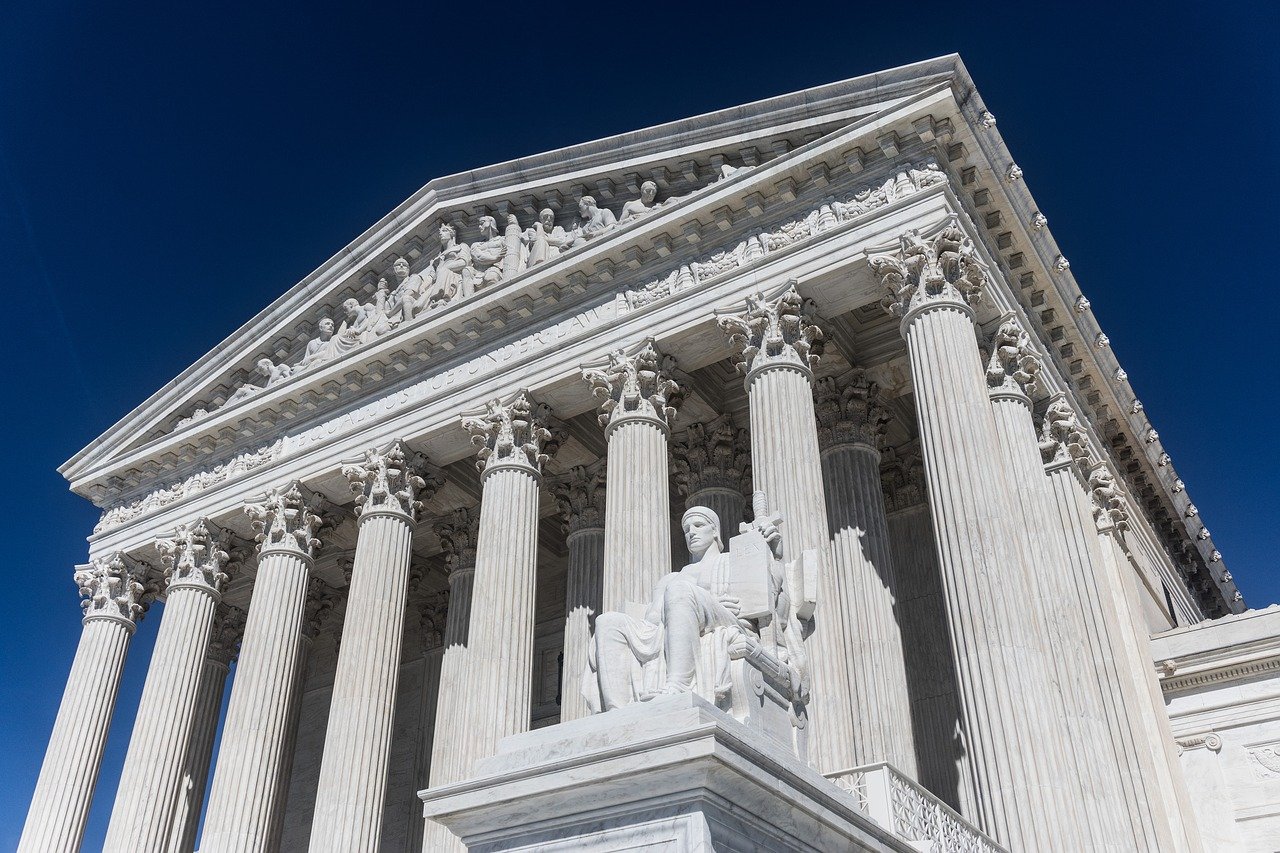The US Supreme Court heard oral arguments Wednesday in the cases of Torres v. Madrid and Pereida v. Barr. The court heard the arguments by telephone with live-streamed audio.
The petitioner in Torres was operating a vehicle under the influence, and in the process of trying to get away, endangered the two officers pursuing her. In the process, one of the officers shot and injured her. Petitioner then filed a 42 USC § 1983 civil rights complaint against the two officers, alleging claims including excessive force and conspiracy to engage in excessive force. Both the district court and the US Court of Appeals for the Tenth Circuit found that the officers were entitled to qualified immunity because, at the time of the shooting, the officers had not seized Torres. Therefore, no Fourth Amendment violation had occurred.
The oral argument focused on the question of whether the physical force used to detain a suspect must be successful in order to constitute a “seizure” under the Fourth Amendment.
Petitioner argued that when the officers’ bullets entered Torres’ back, she was seized within the original meaning of the Fourth Amendment because the officers shot the bullets with the intent of applying physical force to Torres in order to restrain her. The petitioner used cases such as California v. Hodari D. and Brower v. Inyo County as precedent. Hodari, a 1991 Supreme Court case, mandated that a Fourth Amendment seizure requires some sort of physical force with lawful authority. In Brower, the court held that a Fourth Amendment violation occurs when the police intentionally acquires physical control of a person.
The justices mostly asked petitioner hypotheticals concerning the limits of what constitutes a seizure, such as if an officer unintentionally shot a fleeing civilian when attempting to shoot their tires. Justice Clarence Thomas inquired into seventeenth century common law, and if any courts back then held that there was a distinction between the physical touching of the police and a projectile such as a bullet. The petitioner replied that the founding generation recognized that the infliction of physical force on the body is itself an intrusion regardless of whether the person is able to walk away.
Justice Samuel Alito expressed doubts about petitioner’s argument:
If a baseball pitcher intentionally beans the batter, would we say, wow, that pitcher just seized the batter? … In Hodari D., the person had a grip on the purse snatcher for at least a moment. So it’s really hard for me to see how your argument squares with the language of the Fourth Amendment, which prohibits unreasonable seizures, [when the police never physically touched Torres.]
The respondent, representing the US, stated that Torres was indeed seized when officers shot her; since she did not stop her vehicle, the seizure was momentary.
At stake in Pereida v. Barr is whether a criminal conviction bars a non-citizen from applying for relief from removal when the record of conviction is ambiguous as to whether it corresponds to an offense listed in the Immigration and Nationality Act (INA). The petitioner in Pereida is a native and citizen of Mexico who was criminally charged for his attempt to use a fraudulent social security card to obtain employment. When the Department of Homeland Security initiated proceedings to deport him, Pereida sought cancelation of the removal application. However, under the INA, Pereida would be ineligible for cancellation of removal if his criminal attempt conviction qualifies as a crime involving moral turpitude (CIMT).
The petitioner first argued that under the categorical approach to interpreting divisible statutes, the court should presume he committed only the least of the acts that could have led to his conviction to determine if he committed a CIMT. Here, since Pereida’s conviction is ambiguous, it cannot “necessarily” constitute a CIMT because CIMTs require a culpable mental state (essentially, a “guilty mind”). Since his criminal conviction did not specify whether he was convicted of a crime with a mental state element, Pereida’s conviction does not fall under CIMT.
The petitioner then argued that the US Court of Appeals for the Eighth Circuit erred in holding that it was Pereida’s burden to establish his eligibility for cancellation of removal. The petitioner instead asserted that Pereida can rely on a rebuttable presumption that he has not been convicted of a disqualifying offense.
The respondent, representing the Department of Justice (DOJ) emphasized that the petitioner pleaded guilty to violating a statute that covers multiple crimes, some of which are disqualifying; therefore, it was his burden to show he was convicted of a non-disqualifying crime under that statute. Since he failed to do so, he should not receive relief.
Chief Justice John Roberts reflected concern on the ability of criminal defendants to access their past documents:
Well, [the defendant] can know what documents to look for, but the reality, as I understand it, is that often … these things aren’t often papered, because you’ve got a lot of, you know, busy criminal dockets and plea bargains and other things like that. So the fact that the [defendant’s] lawyer knows what to look for isn’t enough.
The respondent argued that, although the criminal defendant may not have the resources of the government behind them, they have “all the incentive in the world and the ability to memorialize [any plea] agreement in a written document.”


